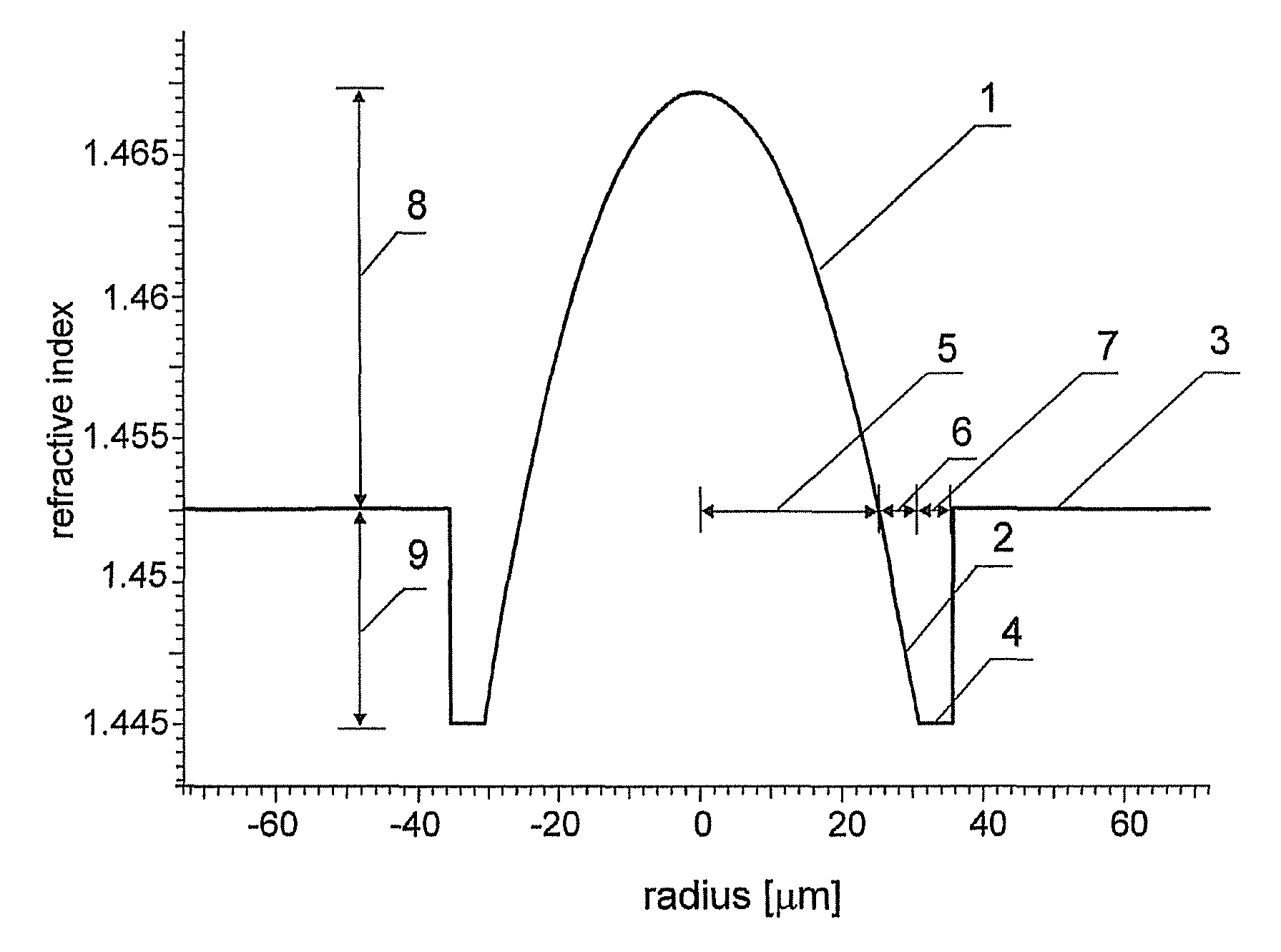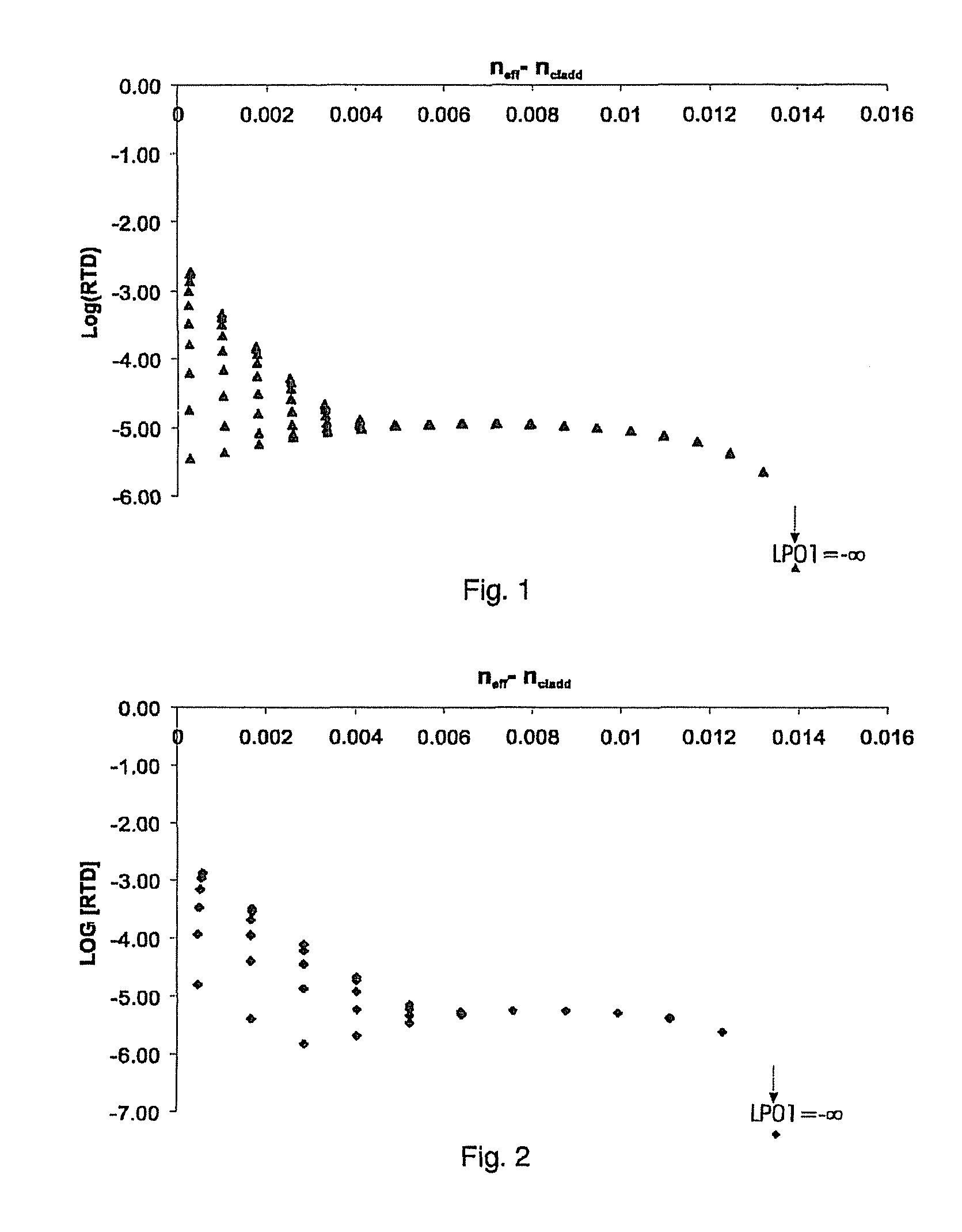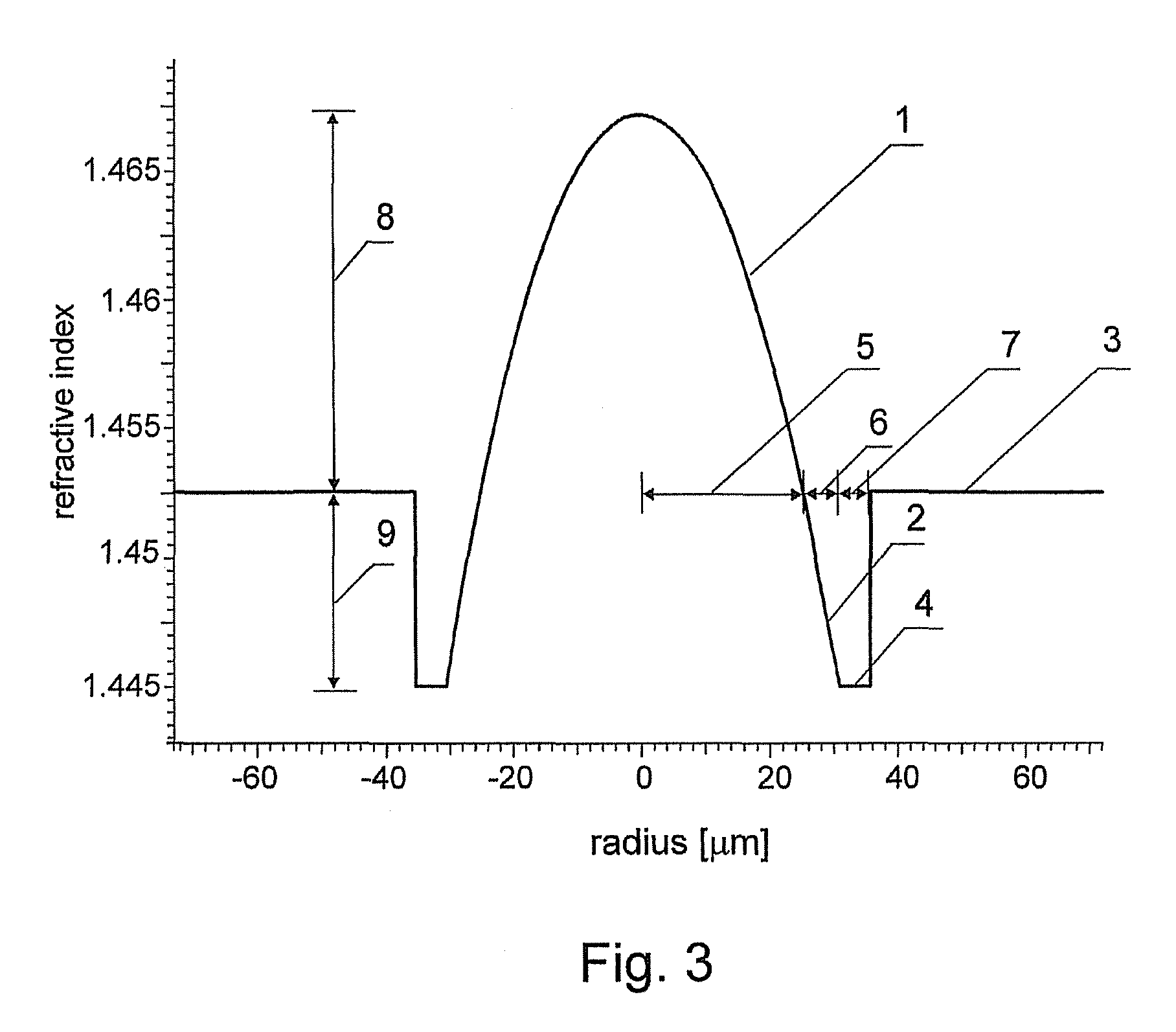Multimode optical fiber with low differential mode delay
a multi-mode optical fiber and delay technology, applied in the field of multi-mode optical fibers, can solve the problems of limiting the further increase of bandwidth, sudden and unexpected degradation of fiber bandwidth, and systems based on selective excitation also require more complex field test equipment, so as to achieve the effect of reducing differential mode delay, negative index differences, and fiber manufacturing practicability and economic
- Summary
- Abstract
- Description
- Claims
- Application Information
AI Technical Summary
Benefits of technology
Problems solved by technology
Method used
Image
Examples
Embodiment Construction
[0026]Detailed numerical analysis has shown that it is not possible to achieve a bandwidth significantly over 1.5 GHz·km when the entire set of modes is excited in a standard multimode fiber. It is generally known that the modal dispersion is minimized by application of the α-profile of the optical fiber that is defined as
n(r)=nmax(1−2Δ(r / a)α)1 / 2 for r
and
nmax(1−2Δ)1 / 2 for r≧a
where r is a coordinate in the radial direction of a cylindrical optical fiber, a is core radius, n(r) is refractive index of the optical fiber at radius r, nmin is the minimum refractive index (in standard fiber this is the refractive index of the cladding), nmax is the maximum refractive index of the fiber core, α is a parameter of the profile, and A is defined as
Δ=(nmax2−nmin) / (2nmax2).
[0027]The profile of standard multimode fibers is composed of a graded index core that is defined by upper equation that describes α-profile of the optical fiber and cladding with the constant refractive index nmin. The α-pa...
PUM
 Login to View More
Login to View More Abstract
Description
Claims
Application Information
 Login to View More
Login to View More - R&D
- Intellectual Property
- Life Sciences
- Materials
- Tech Scout
- Unparalleled Data Quality
- Higher Quality Content
- 60% Fewer Hallucinations
Browse by: Latest US Patents, China's latest patents, Technical Efficacy Thesaurus, Application Domain, Technology Topic, Popular Technical Reports.
© 2025 PatSnap. All rights reserved.Legal|Privacy policy|Modern Slavery Act Transparency Statement|Sitemap|About US| Contact US: help@patsnap.com



